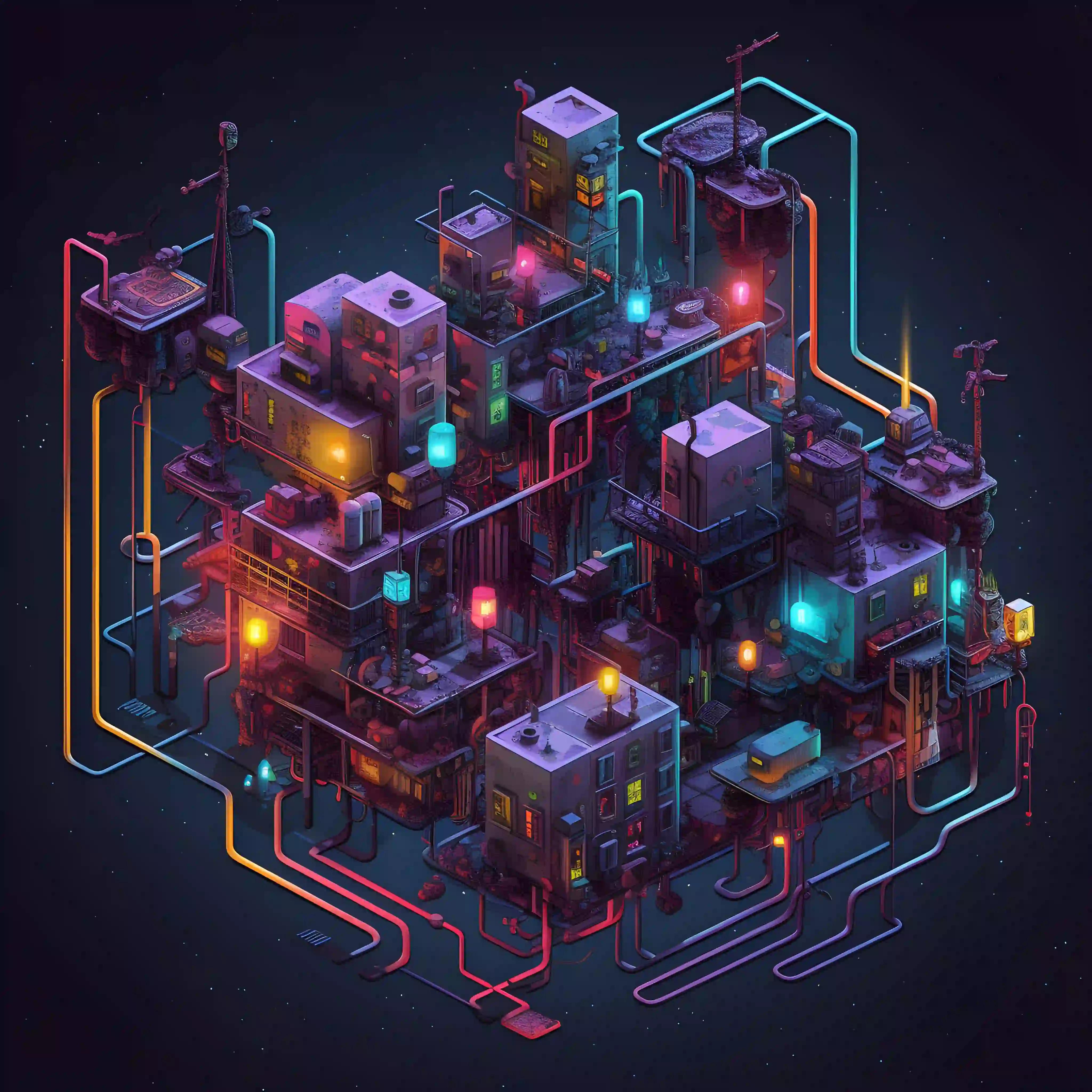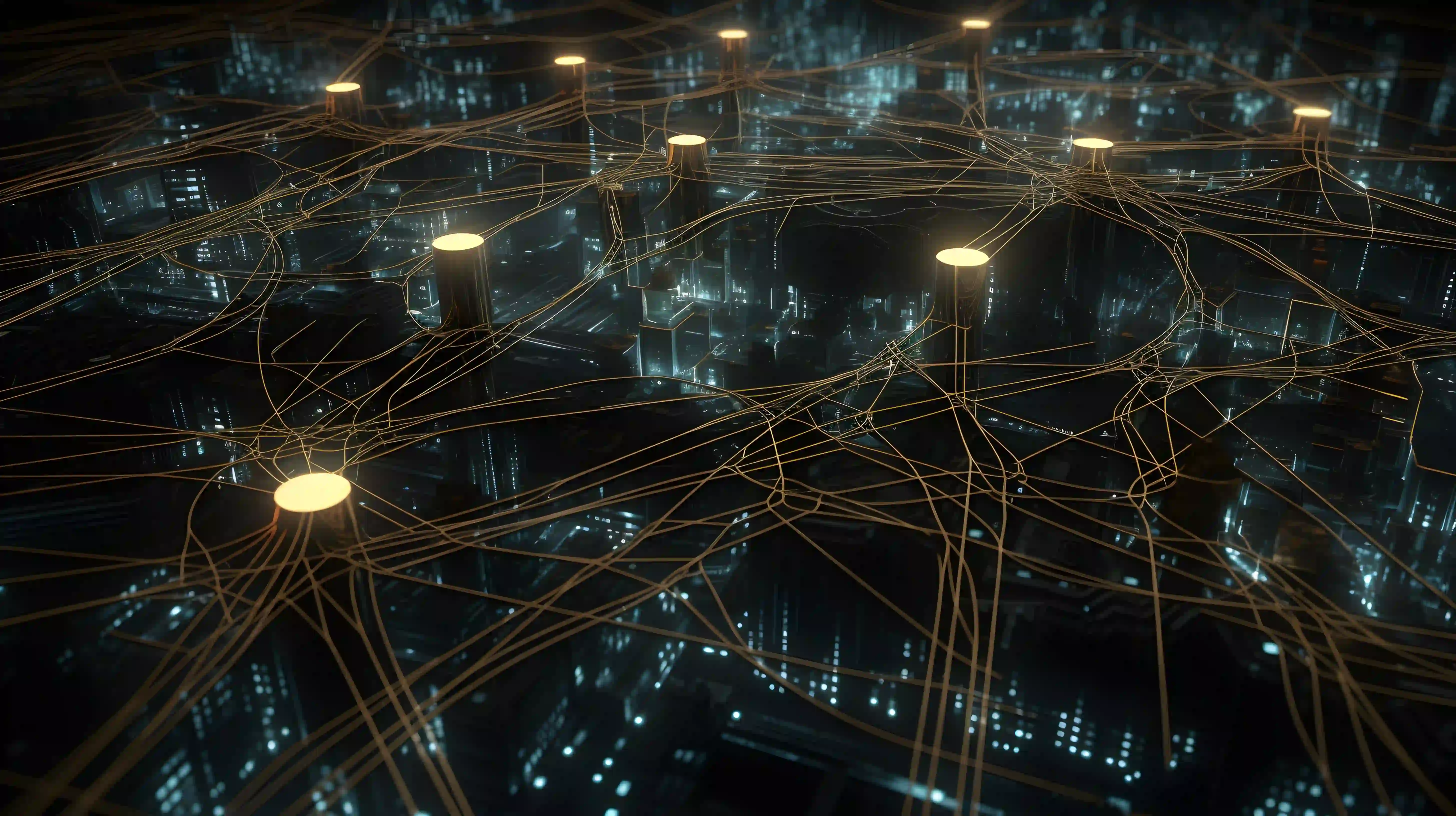Understanding the Web3 Landscape
Written by Kasper
This article comes to you with the generous support of Stake.com. By using our exclusive link and entering promo code ‘coin360’, you’ll receive a 200% deposit bonus to elevate your gaming experience. Discover the excitement and rewards that await you at Stake.com!
As we stand on the precipice of a new digital age, a revolution, known as Web3, is underway. Web3, short for the 'third generation of the internet', represents a fundamental shift in the way we interact with the online world. As opposed to the centralized control of Web2, where large corporations own data and applications, Web3 fosters a decentralized model, empowering individuals to own their data, assets, and applications. Blockchain and decentralized systems are the fuel powering this revolution.
Web3 companies are at the forefront of this paradigm shift, architecting a more equitable digital landscape. Let's delve into the top five Web3 companies leading the way in 2023 and further understand the Web3 ecosystem.

1: MetaMask: The Gateway to the Ethereum Universe
MetaMask is a pivotal player in the Web3 space. This browser extension serves as a bridge between users and the Ethereum blockchain, injecting the Ethereum Web3 API into every website's JavaScript context. This enables users to interact directly with decentralized applications (Dapps) without leaving their browsers, fostering a seamless experience of the Ethereum ecosystem. MetaMask's key offering of a secure Ethereum Wallet epitomizes the spirit of Web3, enabling user control and ownership of digital identities.

2: Brave Browser: Reshaping Internet Privacy
In the Web3 model, privacy is a user right, not an afterthought. Brave Browser exemplifies this ethos by prioritizing user privacy above all. Built on Chromium, Brave not only blocks intrusive ads and tracking scripts but also rewards users with Basic Attention Tokens (BAT) for viewing privacy-preserving ads. This ingenious inversion of the conventional revenue model signals a seismic shift from the ad-driven Web2 towards a user-centric Web3.

3: Chainlink: Linking the On-Chain and Off-Chain Worlds
The capabilities of blockchain technology, an integral part of the Web3 revolution, are limited without access to real-world data. Chainlink, a decentralized oracle network, resolves this conundrum by connecting blockchains with off-chain data. By enabling this critical bridge between on-chain and off-chain worlds, Chainlink showcases the potential of integrating blockchain technology with conventional data sources, pushing the boundaries of what is possible in the Web3 space.

4: Aave: Decentralized Finance at Your Fingertips
The world of finance is not exempt from the transformative power of Web3. Aave, a decentralized finance (DeFi) platform, offers a glimpse into this future. Aave uses blockchain technology and smart contracts to facilitate borrowing and lending of cryptocurrencies in a trustless environment, demonstrating how Web3 can democratize access to financial services. Overcollateralized loans and staking rewards ensure safety and incentives, respectively, driving user engagement and trust.

5: OpenSea: Navigating the Ocean of NFTs
OpenSea, the world's largest marketplace for non-fungible tokens (NFTs), illustrates the potential of blockchain technology in digitizing and verifying ownership of assets. On OpenSea, users can buy, sell, and discover unique digital assets, transforming the way we perceive and handle online assets. The ability to own unique digital items that exist outside the control of a single authority is a hallmark of the Web3 vision.

The History and Evolution of Web3
Web3 represents the latest evolution of the internet, aiming to provide a platform that integrates blockchain technology, decentralized storage, and peer-to-peer networking. The concept of Web3, also known as the "semantic web", was coined around 2006, envisioning a web experience where machines can read and understand information just like humans.
However, the realization of this concept has taken on new dimensions with the rise of blockchain technology and cryptocurrencies. Unlike Web 1.0 (the "read-only" internet) and Web2.0 (the "read-write" web), Web3, often called the "read-write-execute" web, allows users not only to interact with internet content, but also to run applications in a decentralized manner.
The history of Web3 is closely linked with the development of Ethereum, the blockchain that introduced the concept of smart contracts. Smart contracts enabled decentralized applications (DApps), marking a significant step toward a more decentralized web. The ongoing evolution of Web3 is being shaped by various projects like IPFS for decentralized storage and initiatives aimed at improving data privacy and security.
The Technology Underlying Web3
Web3 operates on a suite of revolutionary technologies that provide the backbone for a decentralized internet. Here are the most critical components:
Blockchain: At the heart of Web3 is blockchain technology, a type of distributed ledger that records transactions across multiple computers. The key advantage of blockchain is its decentralized and secure nature. No single entity has control, and once data is recorded, it is practically impossible to change.
Decentralized Applications (DApps): Unlike traditional applications that run on a centralized server, DApps run on a blockchain network. This allows them to operate autonomously, without a central authority, and users interact with the DApp using blockchain addresses.
Smart Contracts: A smart contract is a self-executing contract where the terms are directly written into code. It automates transactions without the need for a middleman, thus reducing the chances of fraud and delays.
Decentralized Storage: Web3 also employs decentralized storage solutions, like the InterPlanetary File System (IPFS). Instead of relying on a single location for data storage, decentralized storage systems distribute data across the network, which improves security and access.
The interplay between these technologies is creating an internet where users can interact with data and execute actions without the need for central authorities, thus promising a more open, secure, and inclusive online world.

The Impact of Web3 on Various Industries
Web3 is not just a new way of experiencing the internet; it is reshaping various industries and creating opportunities previously unimagined.
Finance: Decentralized Finance (DeFi) is already disrupting traditional banking and financial services. With the help of blockchain, smart contracts, and cryptocurrencies, people can borrow, lend, trade, and even earn interest without the need for a central authority like a bank.
Art and Entertainment: With the rise of non-fungible tokens (NFTs), artists can sell their digital art directly to consumers without intermediaries. This democratization of the art world is enabling artists to receive fair compensation for their work. Furthermore, the entertainment industry is also witnessing a shift with blockchain-based games and virtual reality platforms.
Supply Chain: Blockchain's transparent and immutable nature is perfect for tracking and verifying products along the supply chain. From farm to table or factory to customer, each step can be recorded and verified, increasing trust and reducing fraud.
Healthcare: Patient data can be stored and shared securely with blockchain, providing accurate medical histories. It can also facilitate drug traceability, ensuring authenticity and reducing counterfeits.
Real Estate: Smart contracts are simplifying the complicated process of buying or selling property. They can automate steps like title transfers and payments, removing the need for intermediaries and reducing associated costs.

The Future of Web3 and Upcoming Developments
Web3 is still in its nascent stage, with many developments to look forward to in the future.
Interoperability: One of the key focus areas for Web3 development is interoperability, or the ability for different blockchains to communicate with each other. This will allow for a more seamless experience for users and developers alike.
Scalability: Scalability remains a challenge for many blockchain networks. New solutions, such as sharding and layer-2 solutions, are being developed to help networks process transactions more quickly and efficiently.
Privacy: Although blockchain offers a level of anonymity, all transactions are transparent on the ledger. Future developments are likely to focus on improved privacy features, balancing transparency with the need for privacy.
Regulation: As the blockchain space matures, more comprehensive regulations will likely be established. This can provide more security for users and investors, while also providing a framework for businesses to operate within.
User Experience: The current user experience for many Web3 applications can be complex and intimidating for non-technical users. Future developments will likely focus on making these applications more user-friendly, increasing adoption.
The future of Web3 holds promise for a more decentralized and fair internet, with users at the helm of their data and privacy. As we continue to witness its evolution, one thing is clear – Web3 is not just a technological shift; it's a societal shift towards a more democratized digital world.

Conclusion
Web3 is more than just a buzzword; it represents a fundamental shift in how we interact with digital technologies, taking us from passive consumers to active participants. With companies like MetaMask, Brave, Chainlink, Aave, and OpenSea at the forefront, we are beginning to see a future where the internet is decentralized, user-centric, and value-driven. As we move forward, the impact of Web3 will only become more profound, spanning across industries and reshaping our digital landscape. One thing is for sure, the future of the internet is here, and it is powered by Web3.
FAQ about Web3
How to invest in Web3?
Investing in Web3 primarily involves buying cryptocurrencies related to Web3 projects, such as Ether (ETH) for the Ethereum network, where many decentralized apps (dApps) are built. Investing directly in Web3 companies or startups through venture capital or equity investment is another way. As with any investment, it is critical to do thorough research and understand the risks involved.
What is Web3 gaming?
Web3 gaming refers to games built on blockchain technology, incorporating elements like non-fungible tokens (NFTs) and decentralized finance (DeFi). In these games, players can earn real-world value, own their in-game assets and trade them freely. One example is Axie Infinity, where players can breed, raise, battle, and trade fantastical creatures called Axies.
How to become a Web3 developer?
Becoming a Web3 developer involves learning about blockchain technology, smart contracts, and relevant programming languages like Solidity (for Ethereum) and Rust or JavaScript for Polkadot. There are many online courses and resources available to start your journey. Experience with traditional web development, particularly with JavaScript, can be very helpful.
This article has been refined and enhanced by ChatGPT.
